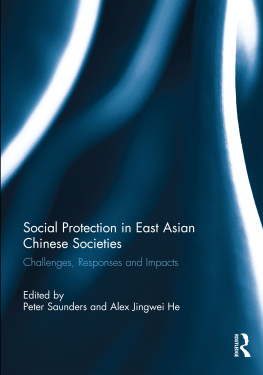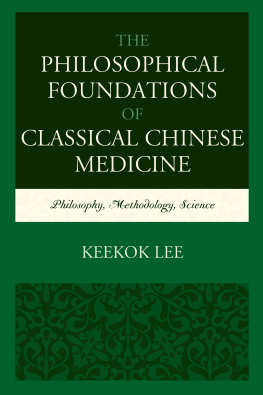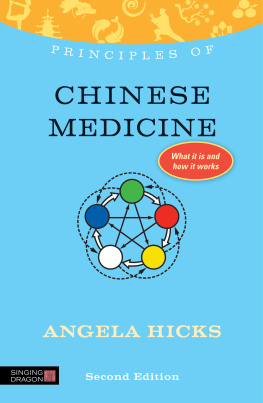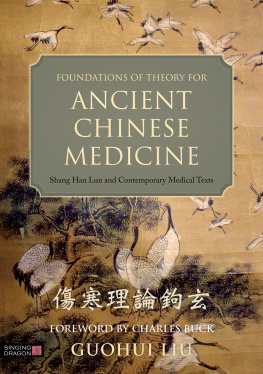
The theoretical foundations of Chinese medicine : systems of correspondence
Porkert, Manfred, author
This book was produced in EPUB format by the Internet Archive.
The book pages were scanned and converted to EPUB format automatically. This process relies on optical character recognition, and is somewhat susceptible to errors. The book may not offer the correct reading sequence, and there may be weird characters, non-words, and incorrect guesses at structure. Some page numbers and headers or footers may remain from the scanned page. The process which identifies images might have found stray marks on the page which are not actually images from the book. The hidden page numbering which may be available to your ereader corresponds to the numbered pages in the print edition, but is not an exact match; page numbers will increment at the same rate as the corresponding print edition, but we may have started numbering before the print book's visible page numbers. The Internet Archive is working to improve the scanning process and resulting books, but in the meantime, we hope that this book will be useful to you.
The Internet Archive was founded in 1996 to build an Internet library and to promote universal access to all knowledge. The Archive's purposes include offering permanent access for researchers, historians, scholars, people with disabilities, and the general public to historical collections that exist in digital format. The Internet Archive includes texts, audio, moving images, and software as well as archived web pages, and provides specialized services for information access for the blind and other persons with disabilities.
Created with abbyy2epub (v.1.7.0)
The MIT Press
This file has been authorized and provided by thepublisher, The MIT Press, as part of its ongoing effortsto make available in digital form older titles that areno longer readily available.
The file is provided for non-commercial use throughthe Internet Archive under a CC-BY-NC-ND 4.0license. For more information please visitwww.creativecommons.org.
Digitized by the Internet Archivein 2018 with funding fromThe Arcadia Fund
https://archive.org/details/theoreticalfoundOOpork
The Theoretical Foundationsof Chinese Medicine
Systems of Correspondence
M.I.T. East Asian Science SeriesNathan Sivin, general editor
Volume III
Contents
Tables vi
The M.I.T. East Asian Science Series ix
Foreword xi
Introduction: Systems of Correspondence in ChineseMedicine 1
Basic Standards of Value: Yin and Yang and the FiveEvolutive Phases 9
Standards of Value for Phenomena of MacrocosmicDimensions: Phase Energetics 55
Standards of Value for Phenomena of MicrocosmicDimensions, I: Orbisiconography 107
Standards of Value for Phenomena of MicrocosmicDimensions, II: Sinarteriology and Foraminology 197
Selected Bibliography 347
Index 353
Tables
Table 1. The Sixty Emblematic Combinations in PhaseEnergetics 63
Table 2. Associations of the Six EnergeticConfigurations 64
Table 3. Combinations of Deversant Circuit Phases 68
Table 4. Periodic Configurations (chieh-chi, Configura-)tiones articulatae) Grouped into Steps (pu} Gradus) 72
Table 5. Dominant Configurations for the Steps 73
Table 6. Occurrence of the Conventus annorum 82
Table 7. The Three Energetic Configurations of theCircuit Phases 83
Table 8. Tin flectens imperat caelo 86
Table 9. Tin minor imperat caelo 88
Table 10. Tin maior imperat caelo 89
Table 11. Tang minor imperat caelo 90
Table 12. Splendor yang imperat caelo 91
Table 13. Tang maior imperat caelo 92
Table 14. Occurrence of the Congruentia caelestismaxima 95
Table 15. Occurrence of the Congruentia caelestiscommunis 95
Table 16. Supervention of the Conventus annorumcommunis 95
Table 17. Couplings and Inflections of Circuit Phasesand Energetic Configurations 96
Table 18. Comparative Synopsis of the PrincipalFunctions of the Orbs 164
Table 19. Comparison of Energetic Terminology 195
Table 20. The Topology and Physiological andPathological Functions of the Cardinal Conduits 211
Table 21. Distribution of Energy among the CardinalConduits 212
Table 22. The Foramina rimica and Their Locations 338
Table 23. The Foramina nexoria and Their ReticularConduits 339
Table 24. Locations of the Five Inductories and TheirCorrespondences 340
Table 25. The Five Inductories of the Yin CardinalConduits 342
Table 26. The Five Inductories of the Yang CardinalConduits 343
Table 27. The Foramina [
Table 28. The Eight Conventus and Their Foraminaconventoria 345
The M.I.T. East Asian Science Series
One of the most interesting developments in historical scholarship over the past two decades has been a growing realizationof the strength and importance of science and technology inancient Asian culture. Joseph Needhams monumental exploratory survey, Science and Civilisation in China, has broughtthe Chinese tradition to the attention of educated peoplethroughout the Occident. The level of our understanding issteadily deepening as new investigations are carried out inEast Asia, Europe, and the United States.
The publication of general books and monographs in thisfield, because of its interdisciplinary character, presents specialdifficulties with which not every publisher is fully prepared todeal. The aim of the M.I.T. East Asian Science Series, underthe general editorship of Nathan Sivin, is to identify and makeavailable books which are based on original research in theOriental sources and which combine the high methodologicalstandards of Asian studies with those of technical history. Thisseries will also bring special editorial and production skills tobear on the problems which arise when scientific equations andChinese characters must appear in close proximity, and whenideas from both worlds of discourse are interwoven. Most booksin the Series will deal with science and technology beforemodern times in China and related Far Eastern cultures, butmanuscripts concerned with contemporary scientific developments or with the survival and adaptation of traditionaltechniques in China, Japan, and their neighbors today willalso be welcomed.
Volumes in the Series
Ulrich Libbrecht, Chinese Mathematics in the Thirteenth Century:The Shu-shu chiu-chang of Chin Chiu-shao
Shigeru Nakayama and Nathan Sivin (eds.), Chinese Science:Explorations of an Ancient Tradition
Next page

















